The market for household appliances is confidently filled with glass-ceramic products. Each type of modern products has an original design, its own technical features. Useful appliances make working in the kitchen easier. Dishes for glass-ceramic plates are not suitable for everyone. Pots and pans should have a bottom of a certain thickness and preferably a dark color for better heat absorption. In order for the panel to work as efficiently as possible, the diameter of the bottom of the cooking appliances must exactly match the dimensions of the burner.
Content
Features of glass-ceramic plates
The device runs on electricity without supplying gas pipes. This makes it convenient and economical, makes it possible to arrange anywhere in the room. The glass ceramic surface is smooth, perfectly flat. At certain places, heating zones are located, as indicated by a contour of different diameters. Management is carried out by buttons on the touch panel.
The working elements of all electric models heat up instantly. The material of the glass ceramic panel is ceran. It has high strength, the ability to withstand heavy objects. The burners on the panel can be of two types: halogen with heat-generating lamps or High Light, heated by a tape from a special alloy in the form of a snake.
The glass-ceramic panel cools as fast as it heats up. You can safely touch it just a few minutes after turning it off. For houses or apartments with frequent blackouts, models of a combined type are suitable. There are electric and gas hobs on the hob.
Types of hob
According to the connection method, the cooking surfaces can be autonomous and dependent on the heating element. All glass-ceramic models have large easily adjustable thermal conductivity. The following types of cooking surfaces are most often used:
- Electric. Stand out with huge functionality. When choosing such a model should take into account the large load on the wiring. It must withstand high voltage. The hob is completely covered by a glass-ceramic stove. Hot plates are round or oval.
- Induction. Modern simple devices, gradually replacing other varieties of surfaces.Practical, durable models equipped with advanced features. Cost-effective equipment instantly heats the hotplate, automatically turns it off if there are no containers on it.
- Gas. Reliable plates are able to work in the most extreme conditions. Modern glass-ceramic coating is able to withstand the effects of combustion, high temperature along with metal surfaces.
Features of heating dishes
The heating rings of the glass ceramic stove come from the heating elements. Heat sources are located under the ceranium plate, which forms the base of the panel. Glass-ceramic coating has high thermal conductivity, resistance to mechanical damage. The dishes are heated using the following types of burners:
- Tape. The heating element is made of high resistance alloy. The tapes are tightly stacked, which increases their heat transfer. For complete heating, 5-6 seconds are enough.
- Rapid. They have the simplest construction. Nichrome spirals heat up in 10 seconds. Round burners can be of different sizes. Electricity consumption depends on their size.
- Halogen. The heating element is represented by a quartz gas-filled tube. Cooking can begin 2 seconds after switching on. The amount of electricity consumed is higher than other models.
- Inductive. The safest and most expensive type of burners. They do not heat the hob, but the bottom of the dishes, which reduces the risk of burns to a minimum. The efficiency of energy consumption is due to the ability to accurately adjust the power of the device.
Basic requirements for utensils
Manufacturers of cooking surfaces recommend using metal pots and pans that meet all requirements. Cookware must have a flat, even bottom to ensure the best heat transfer.If the lower part of the item is deformed, the burner itself will overheat, which will lead to a reduction in its service life. Even small air spaces between the surface and the bottom of the dishes reduce heat transfer. There should be no embossed badges of the manufacturer, embossed patterns, other roughnesses.
The bottom of the dishes should have a minimum reflection coefficient. Preferred matte dark surfaces. It should be dense enough to exclude deformation under the influence of high temperature. If the thickness of the bottom is not enough, there is a high probability of a deflection, which will lead to a decrease in the density of contact of the bottom to the surface of the electric stove.
To avoid overheating, cookware and burner must be of the same diameter. From the uncovered part of the element, heat is removed very poorly. If the edges of the bottom of the pan go beyond the burner, there will not be enough power to fully warm up.
Manufacturers of stoves and glass-ceramic surfaces recommend the use of pots and pans with a concave bottom. Such a design will ensure a snug fit, efficient use of heat.
Which dishes do not fit
Not all dishes can be used for cooking on a glass-ceramic surface. Familiar pots already in contact with gas burners are unsuitable, even if they look durable. An uneven, rough bottom will scratch, deform the heating surface.
There will be no benefit from the use of aluminum, glass, copper, ceramic dishes. Soft metals may begin to melt when heated. The remaining traces will be very difficult to clean. Round base items will not work. Food in cauldrons will not evenly warm up, electricity will be wasted.
The choice of material for kitchen utensils - interaction with a glass ceramic hob
Many types of pots and pans for glass-ceramic surfaces are equipped with modern technological solutions. Each unit must be accompanied by a diagram of the correct location. Most models have thermally insulated handles, thermometers, readiness sensors. Cooking will be quick and enjoyable if you use dishes made from certain materials.
The main requirement for glass-ceramic cookware is a flat bottom. Full matching of sizes will extend the service life of the equipment. The ideal option is a smooth matte black bottom. So the material will conduct and reflect heat better. A bottom created from several layers of different materials is more suitable. Weighted household items should be chosen. They will last much longer.
Enamelware
Durable household products have good thermal conductivity. A variety of designs and colors allows you to choose the right appliance for the interior of the kitchen. Use enameled pans carefully, avoiding the formation of chips. Do not allow an empty appliance to come into contact with a heated surface.
Mediocre fortress is distinguished by objects treated with ceramic, Teflon coating. Cookware with a magnetic bottom is suitable for any burners. Enameled pots are not durable, resistant to mechanical stress. Thanks to the coating, the metal does not release toxic substances into food when heated. In such dishes, you can cook and store cooked dishes.
Stainless steel cookware
The best option for glass-ceramic surfaces. Such kitchen utensils look aesthetically pleasing, easy to clean, conducts heat well. When purchasing stainless steel kits or individual items, the magnetic properties of the material should be considered. Depending on the manufacturer and type of metal, they may vary.
Most stainless steel kitchen appliances have pictograms on the side walls indicating their application and composition. The first digit corresponds to the chromium content, the second to nickel. Elegant appearance, ease of maintenance, ideal working qualities make stainless steel an excellent material for furnaces with glass-ceramic panels.
Stainless steel cookware can have a variety of shapes and sizes. It is not distinguished by a variety of color design, has a steel shade pleasant to the eyes. A double bottom will provide improved heat transfer. Layering will protect against corrosion, increase hygiene, and allow use in any conditions.
Teflon or ceramic coated aluminum cookware
For cooking, you can use objects made of aluminum, but only with a ceramic, Teflon-coated bottom. Light cooking is due to some features of the main material. The pan can keep the temperature up to 450 degrees for a long time. This item will be indispensable for fast food lovers.
Ceramic coating protects dishes from any kind of damage. From pans and pans, burning, scale and other impurities are easily removed. Teflon washes much worse, but has all the characteristics inherent in modern kitchen appliances. The fragile surface does not withstand sudden changes in temperature, so hot dishes, after they have finished cooking, can not be placed under cold water. The maximum incandescent temperature is 250 degrees.
Heat resistant glass
Technological, aesthetically attractive option is ineffective in work. Low thermal conductivity results in high energy consumption. Heat-resistant glass does not have magnetic properties, which makes it useless on induction panels. Fragile dishes are afraid of temperature contrast, have a lot of weight due to the thickness of the walls.Glass material does not have the ability to burn like metal. Foods take longer to cook, making large pieces of meat or fish quicker will be more difficult. The advantages of glassware include the following factors:
- Inertia. Glass does not come into contact with cooked dishes. The material calmly tolerates an acidic, alkaline, salty environment.
- Transparency. Glass walls allow you to constantly monitor cooking, evaluate color, texture and other parameters. You can adjust the boiling intensity of the contents without lifting the lids.
- Resistance to corrosion. The appearance of rust is completely eliminated. Prolonged contact with water, poor wiping will not harm the dishes.
- The absence of pores. Smooth surface does not get dirty and does not burn. It is easy to clean, does not slip on a glass-ceramic plate.
- Ease of care. Any detergent is suitable for washing. Contaminants are easily removed with warm water and a soft sponge. The dishwasher option is suitable.
Cast iron
Seamless products from an alloy of iron with carbon, phosphorus and silicon are made in special forms. The workpiece is processed, cleaned and equipped with handles. Food made in cast iron fully retains its taste.
Strong, durable dishes have thick walls and a bottom. She is not afraid of any mechanical damage. If the pan or pan is well heated before cooking, the dish will not burn. Cast iron objects are not deformed under the influence of high, low temperatures and their differences.
The disadvantages of cast iron include a lot of weight. The constant use of such dishes may harm the glass-ceramic surface. Cast iron objects may rust from constant contact with water. For the preparation of acidic apple, tomato sauces, it is better not to use it. It is not recommended to store food in cast-iron dishes.
Enamelled cast iron is more suitable for glass-ceramic surfaces.Such objects are not susceptible to rust until chips or other defects appear on the inside or outside of the surface that violate the integrity of the coating.
Enamel coating deprives cast iron cookware of non-stick properties.
Hob Care
A plate with a glass-ceramic panel requires specific care. In order for it to remain in good condition as long as possible, to please cleanliness during operation, we must listen to the following tips:
- Do not place wet dishes on the glass ceramic surface. Heating the pan with a wet bottom will cause white spots. It will be very difficult to get rid of such stains.
- Do not use a dishwashing sponge for cleaning. Leftover grease, food particles can leave scratches, and other damage. This should be a separate dense cloth, designed exclusively for wiping a fragile panel.
- Sugar and plastic must not be allowed to enter the surface. When heated, the substances will begin to melt, eat into the surface.
- Any contamination from a surface such as induction must be removed immediately. Dried mud can be removed with a special household scraper. You can replace it with an ordinary razor, melamine sponge.
- For complex stains, only mild products. Glass ceramic surfaces can only be cleaned in a gentle manner. Hard metal washcloths, abrasive products can not be used. Stains must be covered with soda, covered with a damp cloth, left for 10 minutes.
- Create a protective thin film. The necessary film-screen will turn out if you wipe the clean surface with a napkin dipped in vegetable oil. Dust, small particles of paper napkins, crumbs will not settle on such a stove.
Conclusion
Dishes for a glass-ceramic surface must be treated with protective agents. Information on the use of this particular type of equipment is indicated on the product label.When choosing a new element of kitchen utensils, one should listen to the recommendations of the manufacturer, since the operation of such stoves is significantly different from traditional models.
A burner of any size requires docking with a pan or pan of a suitable volume. It is necessary to select perfectly adjoining models of kitchen utensils. The best glass-ceramic cookware is 18/10 stainless steel. The ratio of chromium and nickel indicates chemical resistance, hardness, wear resistance of the material. Such products can be heated to any temperature.

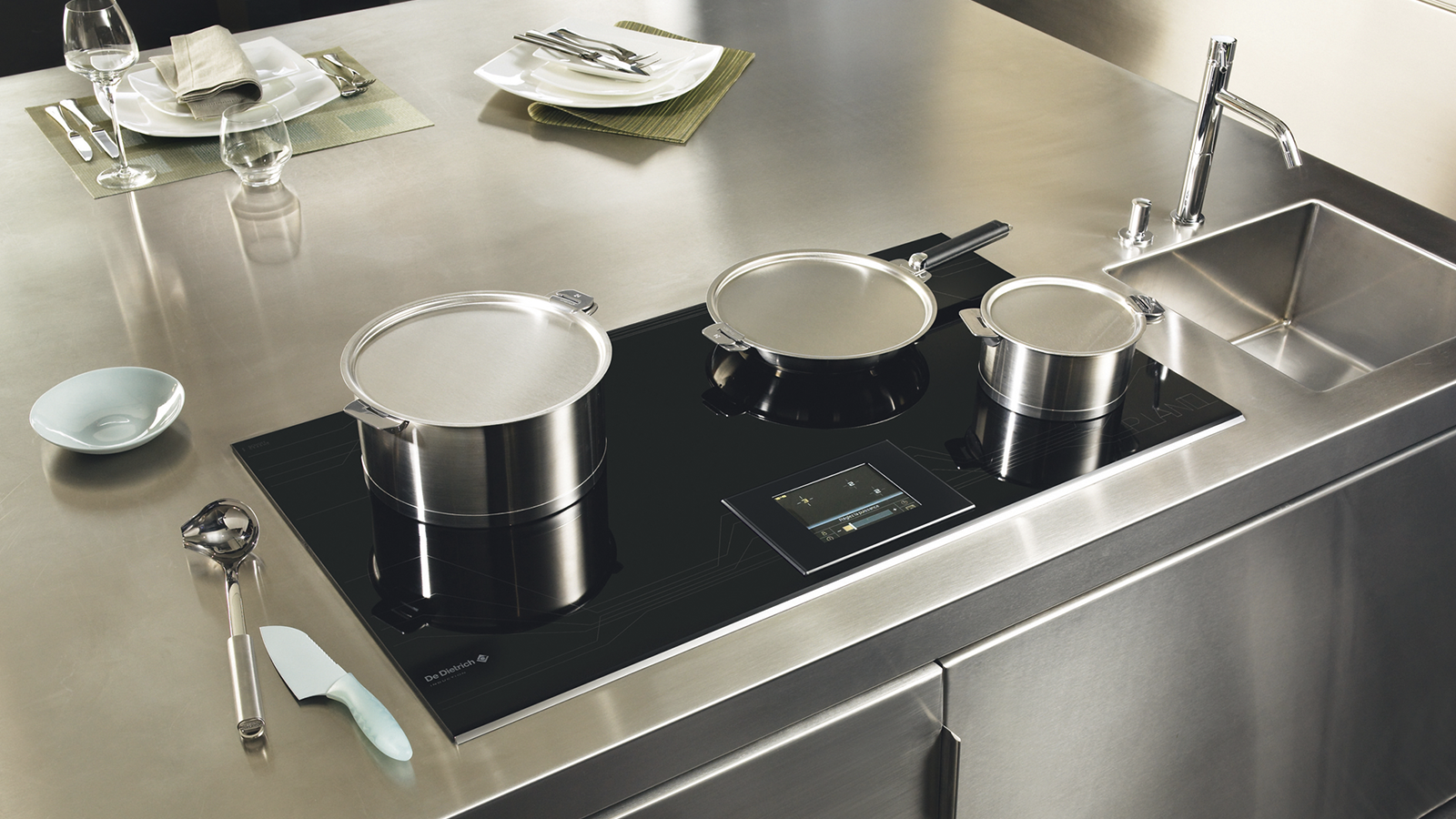
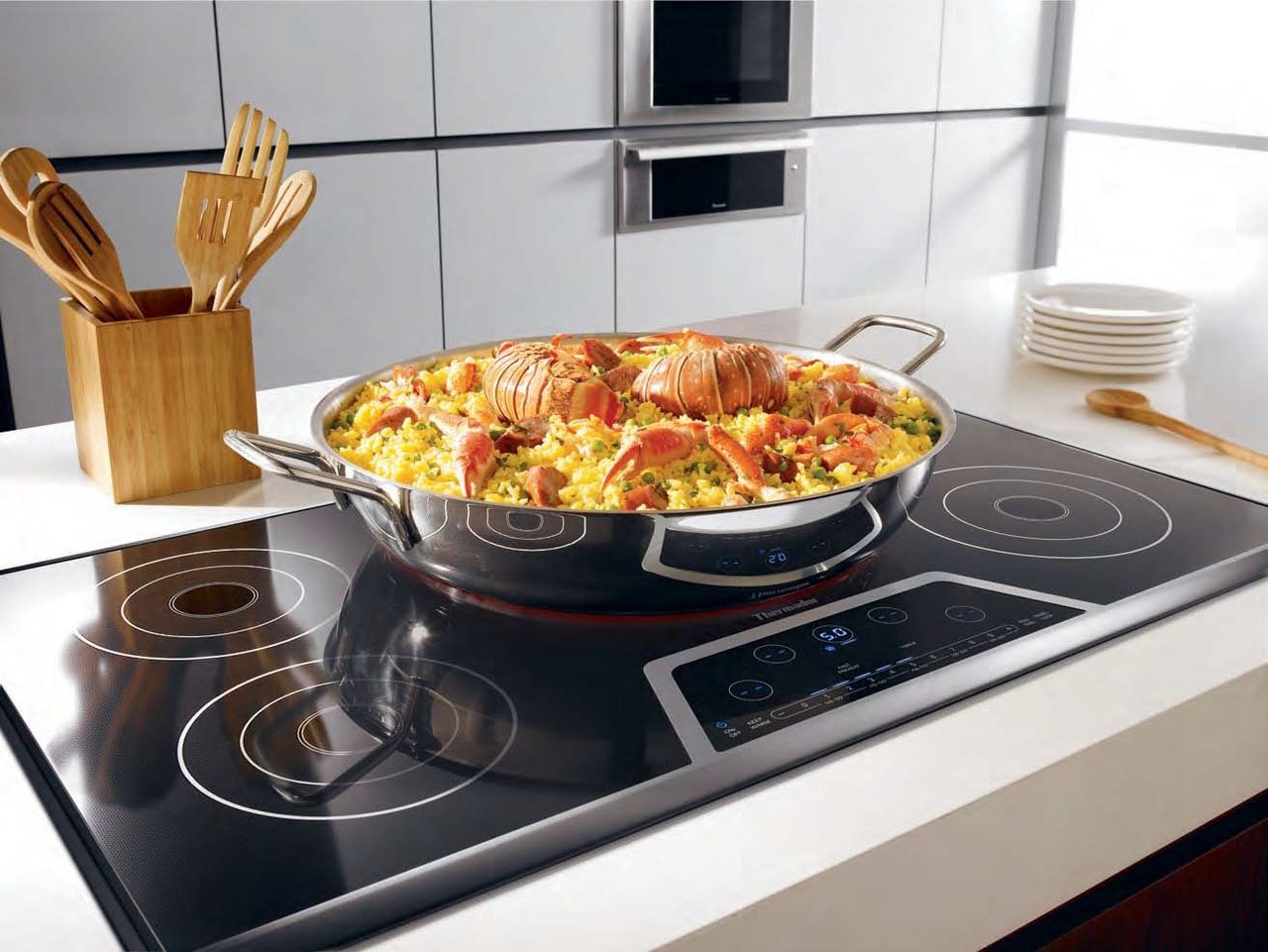
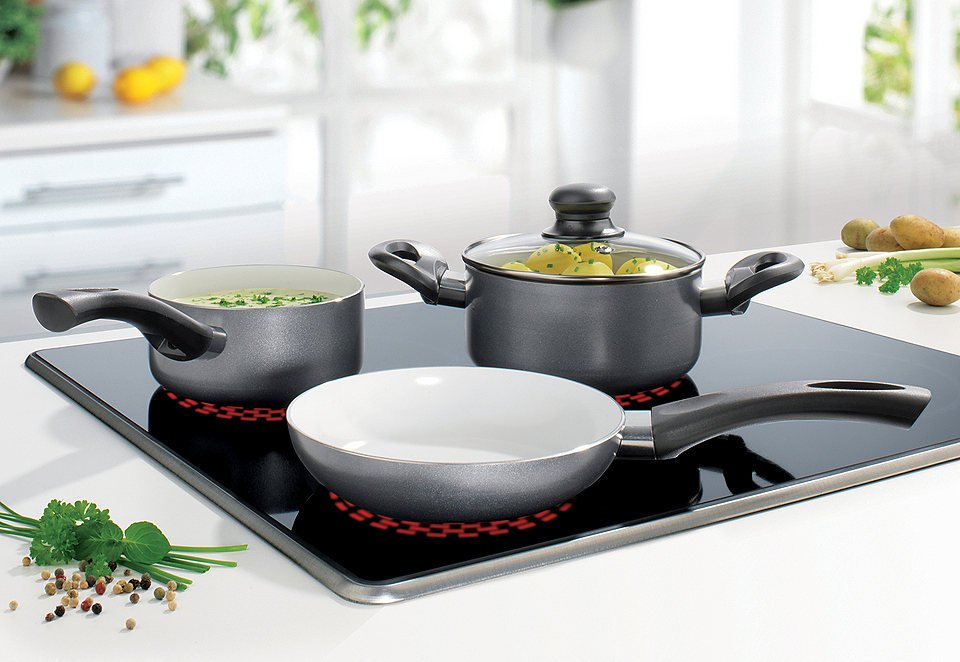
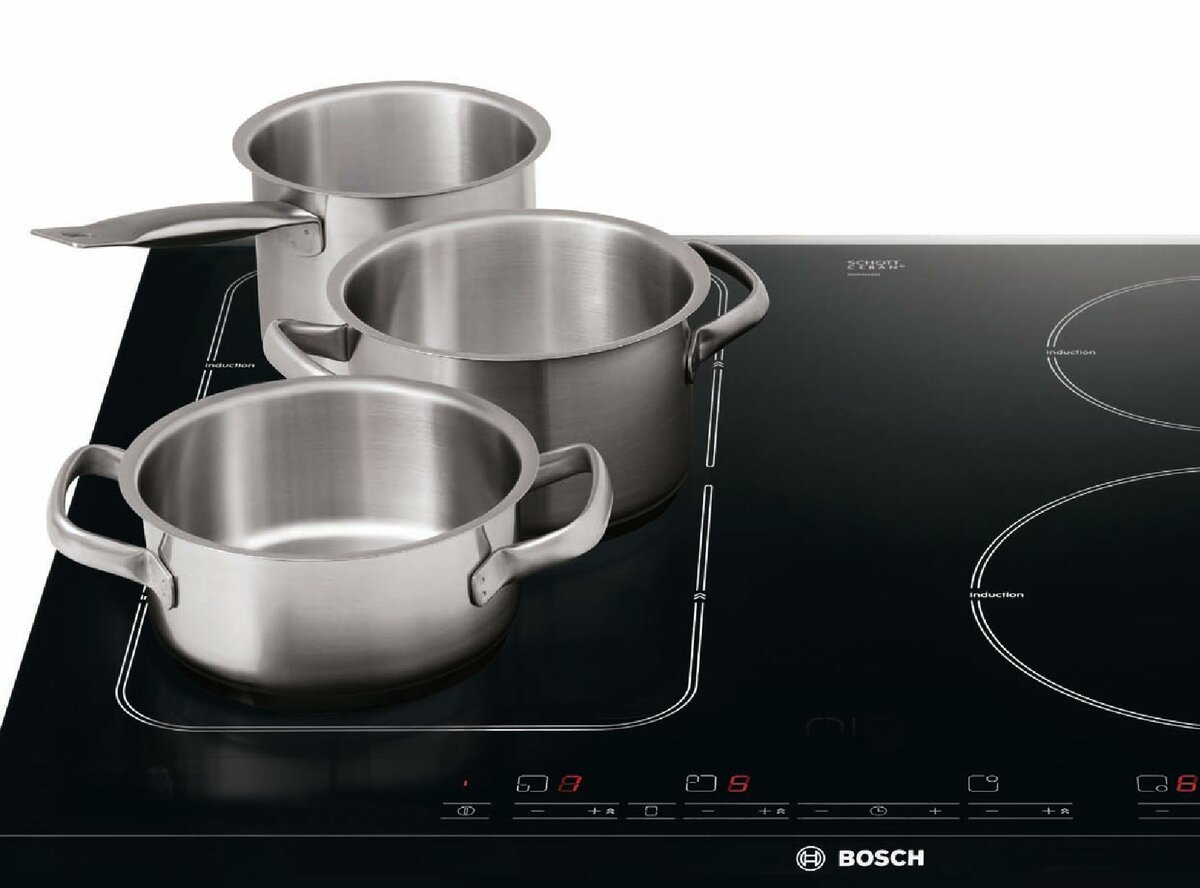
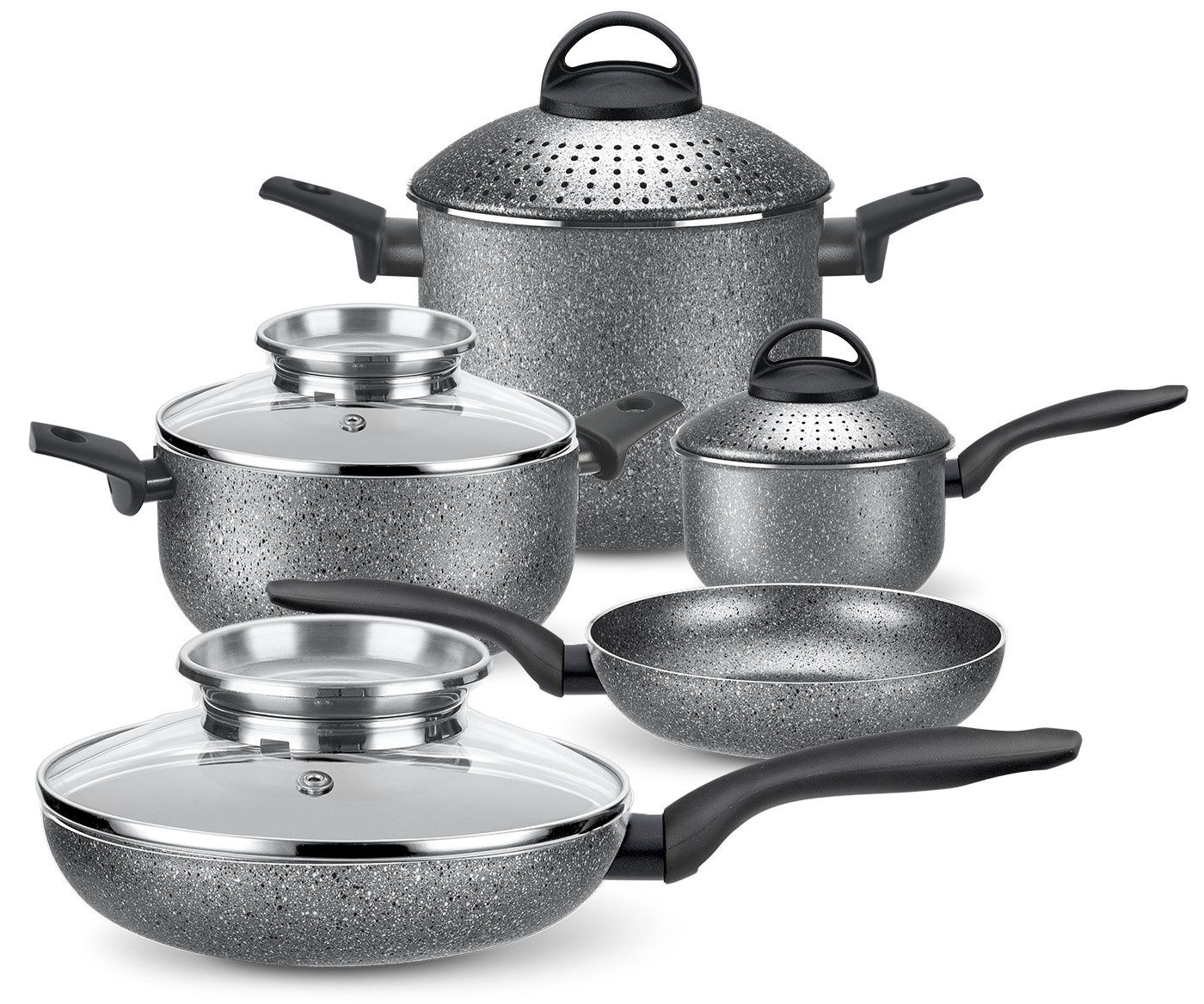
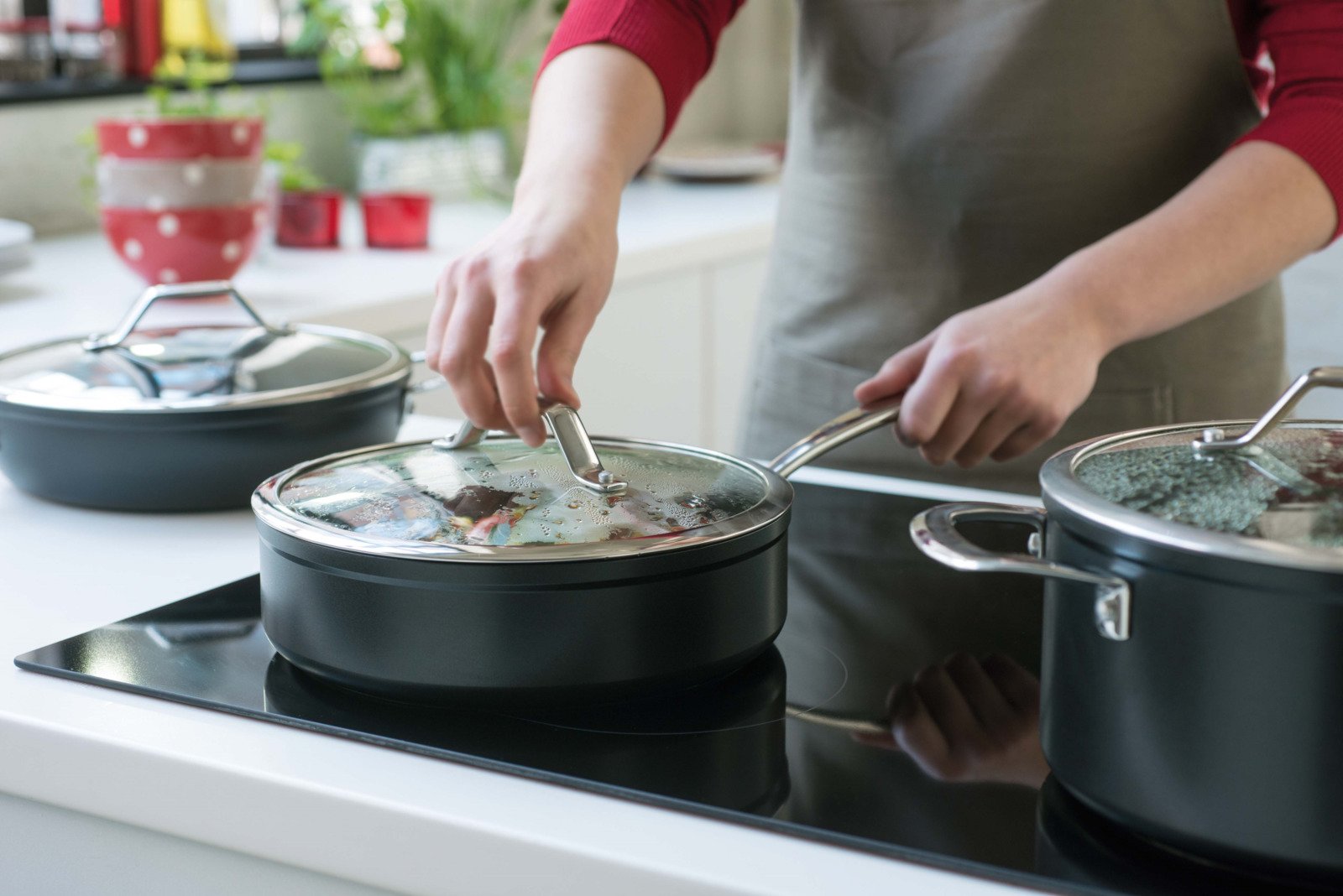
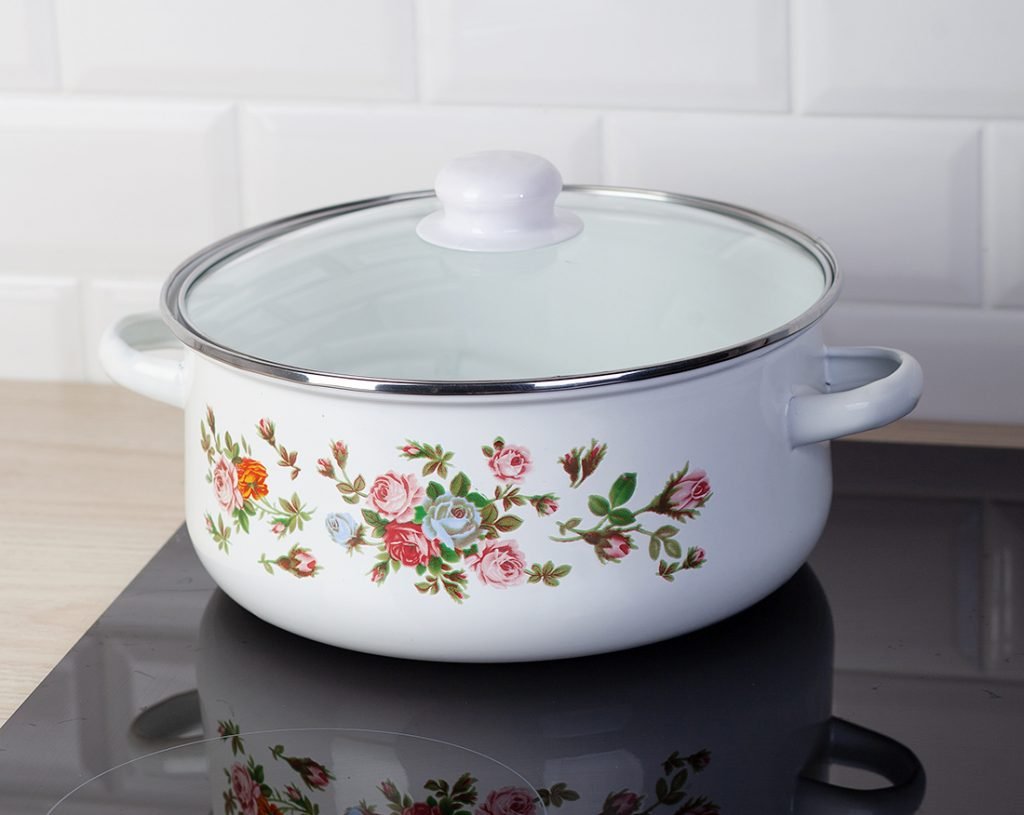
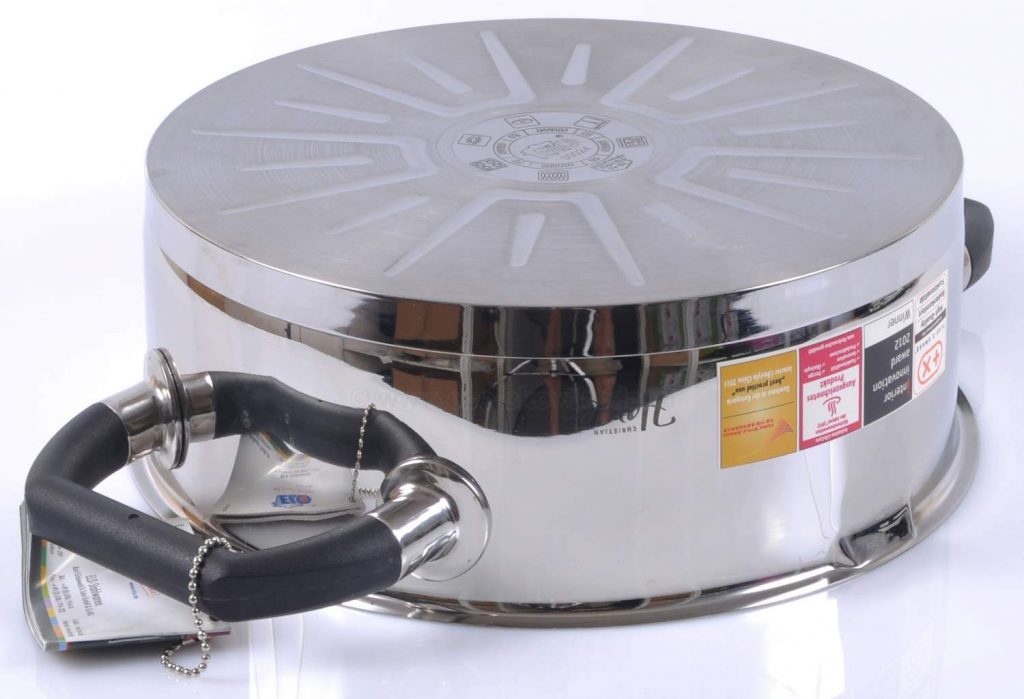
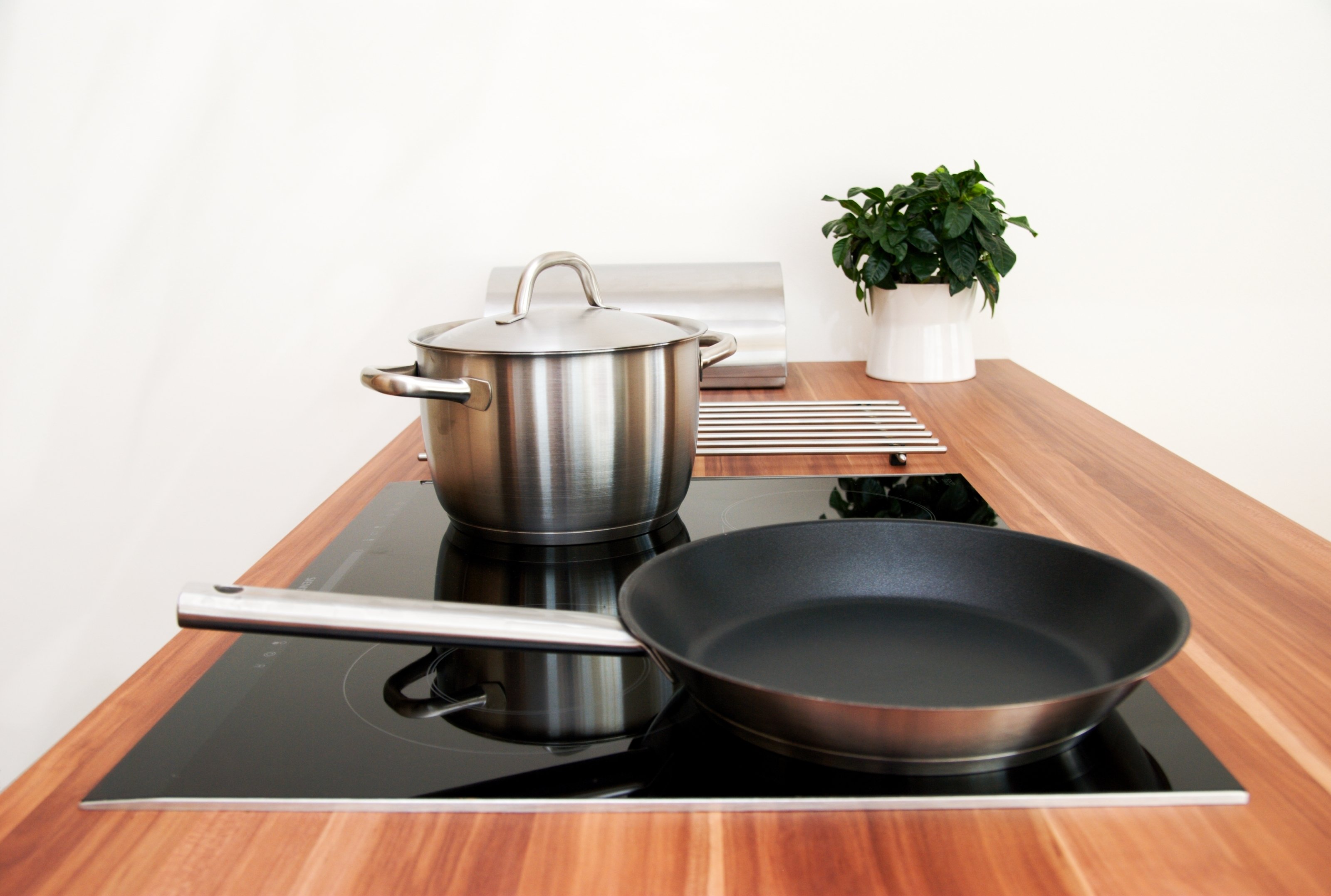
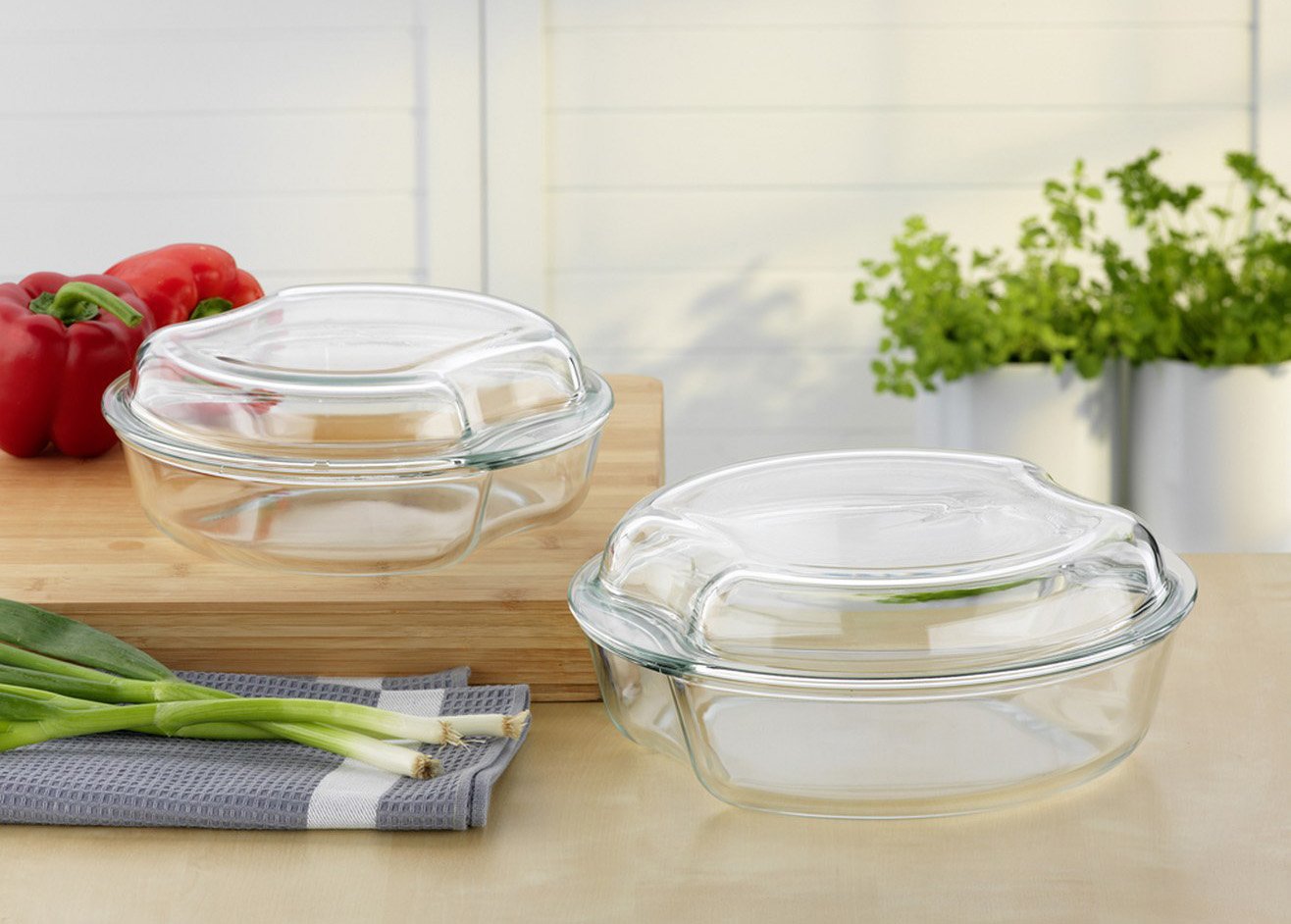
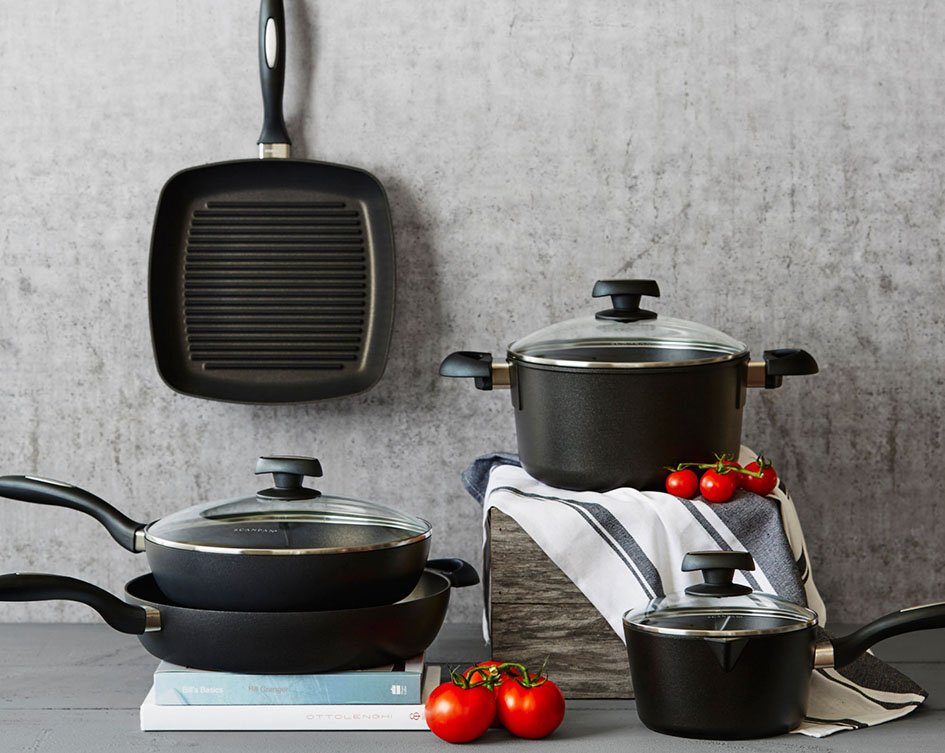
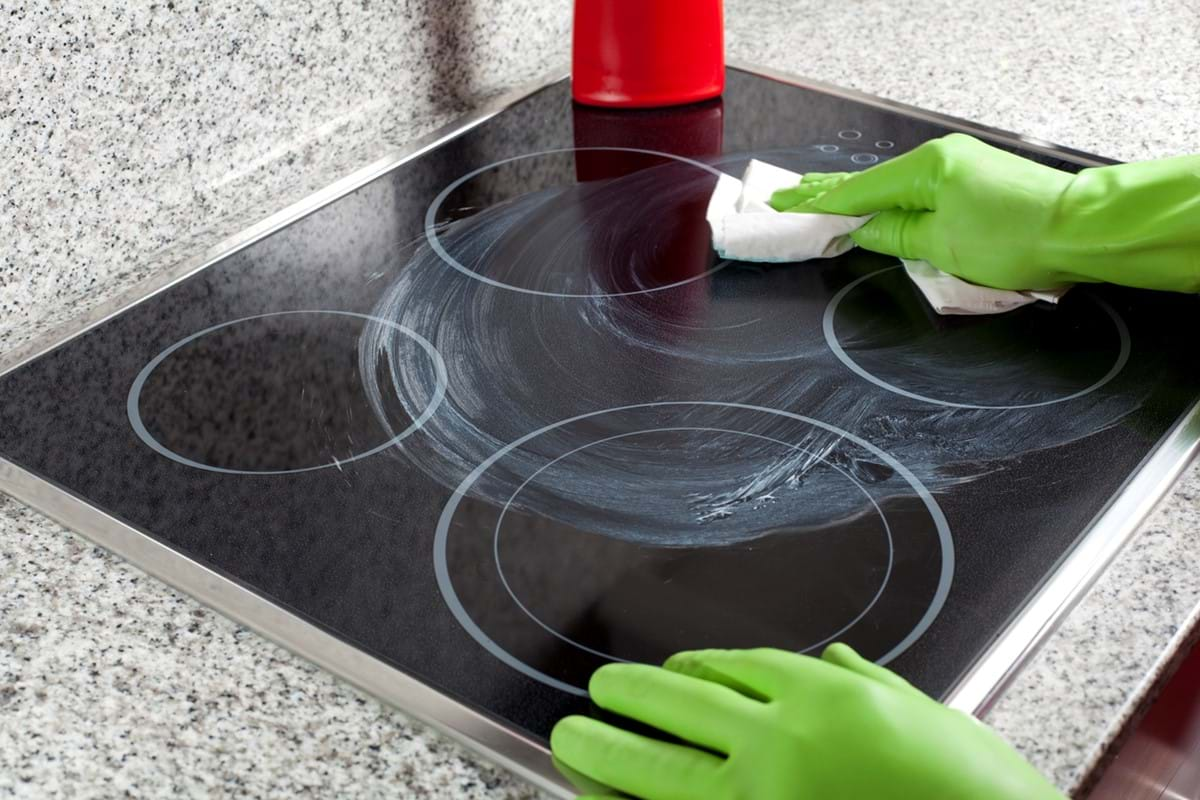

Thanks for the tips! And then they changed the apartment, but here is an incomprehensible Hotpoint to me)